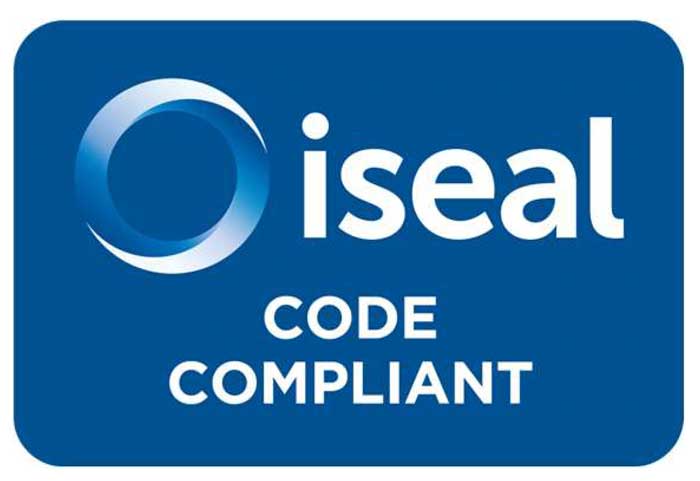“Sustainability at a Crossroads”: GlobeScan report and ASI’s strategy
A recent survey of nearly 850 sustainability professionals across 72 countries found an overwhelming mood for moderate or radical reshaping of the global sustainability agenda. Read about the challenges and ASI’s strategy.
7 August 2025
Published in July 2025, the research found that many respondents were frustrated with current sustainability efforts, illustrated through a sense of:
- Eroding confidence in multilateral frameworks such as the Sustainable Development Goals and the Paris Agreement
- Stalled progress and rising backlash to sustainability, particularly in North America, though there is more optimism in Asia-Pacific and Latin America
- Underperformance by key actors such as governments, the investment sector and private sector.
Looking forward, respondents were asked to rate 64 actions or initiatives in terms of their potential impact and feasibility to deliver positive sustainability outcomes at scale over the next 5 years. These were then grouped into the four quadrants below:
Figure 1 – Assessing Levers of Change to 2030: Potential Impact vs Feasibility
Source: GlobeScan Report, July 2025
For businesses, the 8 actions seen to hold the greatest momentum through high impact and high feasibility by the survey respondents were:
- Technology innovation / R&D for sustainability solutions
- Commercialisation of sustainability through better products / services
- Integration of sustainability within companies
- Circular economy practices
- Collaborations within / across sectors
- Supply chain engagement / performance
- Science-based targets initiatives
- Compliance with mandatory sustainability/reporting regulations
As a capital-intensive sector, the aluminium industry is relatively focused on the first two of these – technology innovation and commercialisation of sustainability. However, there are clear challenges for investment in the current uncertain global geopolitical and economic climate. Furthermore, Figure 1 highlights the sheer diversity of potential actions by investors and capital markets, civil society and governments and public policy, to ‘accelerate sustainability over the next 5 years’, creating a complex ecosystem for company actions and decision-making.
While ‘industry sustainability standards’ (corporate/business action) and ‘sustainability certifications’ (civil society action) were seen by respondents as somewhat less transformative, the design and uptake of these across sectors and initiatives varies enormously in practice. For example, B Corp Certification was singled out in the survey as a ‘low impact/low feasibility’ type of action, while those two more generally described approaches averaged higher feasibility/impact perceptions, based on the spread of responses.

Figure 2 – High impact/high feasibility actions within ASI’s programs
Data sourced from: GlobeScan Report, July 2025
In ASI’s case, many of the high momentum actions for business identified by respondents above are actually embedded in ASI’s standards. ASI’s assurance process is rigorous, outcomes are transparent and show change over time – at scale. The ASI Performance Standard is being implemented by entities producing 32% of global bauxite, 21% of alumina, 37% of primary aluminium and 49% of flat rolled products. The regular audit cycle embedded in ASI Certification drives businesses to close non-conformance gaps in areas including climate, responsible sourcing and safety.
The ASI standards are again being further strengthened through the current standards revision process. ASI also works on a range of projects and activities that are ‘beyond certification’, including with ASI’s Indigenous Peoples Advisory Forum.
Coming back to the ‘high momentum’ opportunities identified in the report and highlighted in Figure 2, relevant ASI strategy and activities include:
- Commercialisation of sustainability: the opportunity for market differentiation through ASI Performance and Chain of Custody Certification, and potential future claims frameworks, are being explored in the standards revision (subject to compliance with ASI’s competition law policy).
- Integration of sustainability within companies: learning modules, regular webinars and sharing of peer resources made available to all interested stakeholders through ASI’s educationAL platform. This includes for example EGA’s recent ‘Meeting ASI Expectations’ learning package designed for all levels of education and expertise within the company, and shared with a broader audience.
- Circular economy practices: an active Circularity Working Group has been preparing significant revisions for the ASI Performance Standard. ASI has already published guidance on circular product design (downstream) and a circular economy approach to bauxite mine closure (upstream). Project-based collaborations also bring value to supporting partners and stakeholders, such as in ASI’s CARE project which is piloting approaches to integrating informal waste pickers into formal recycling markets, supported by the ISEAL Innovations Fund.
- Collaboration within/across sectors: ASI is a multi-stakeholder organisation working across the value chain, and collaborating with a wide range of other initiatives, including through formal recognition processes. These include with green building programs, mining and metals standards, ESG ratings schemes and thematic initiatives such as on nature.
- Supply chain engagement / performance: ASI publishes audit reports on its website and through elementAL, ASI’s online assurance platform, including a Public Dashboard. A new version of elementAL is currently under development which aims to enhance accessibility to assurance-related data. The ASI Performance Standard V3 is a ‘Track A’ standard for the London Metal Exchange (LME) Responsible Sourcing requirements, supporting implementation of the OECD Due Diligence Guidance for the Responsible Supply Chains of Minerals from Conflict-Affected and High Risk Areas.
- Science-based targets initiatives: ASI’s Performance Standard V3 introduced a new Entity-level GHG Pathways Method and Calculation Tool which is specifically designed for the aluminium value chain. This enables Performance Standard-certifying Entities (and indeed any aluminium producing or transforming business along the value chain) to articulate aluminium emission intensity reduction slopes (GHG Emissions Reduction Pathways) and targets, against which their performance can be measured and disclosed.
A strength of ASI is its diverse, global membership aligned around the specific issues of the aluminium value chain. Members are working constructively to address the need for a harmonised approach to the just, low-carbon, circular and nature-positive transitions needed for a more sustainable world. The solutions are not simple, and ASI must remain forward-looking and agile as we work towards the next decade of impact through our programs.
Download the GlobeScan report here
RELATED TOPICS:
SHARE THIS ARTICLE


